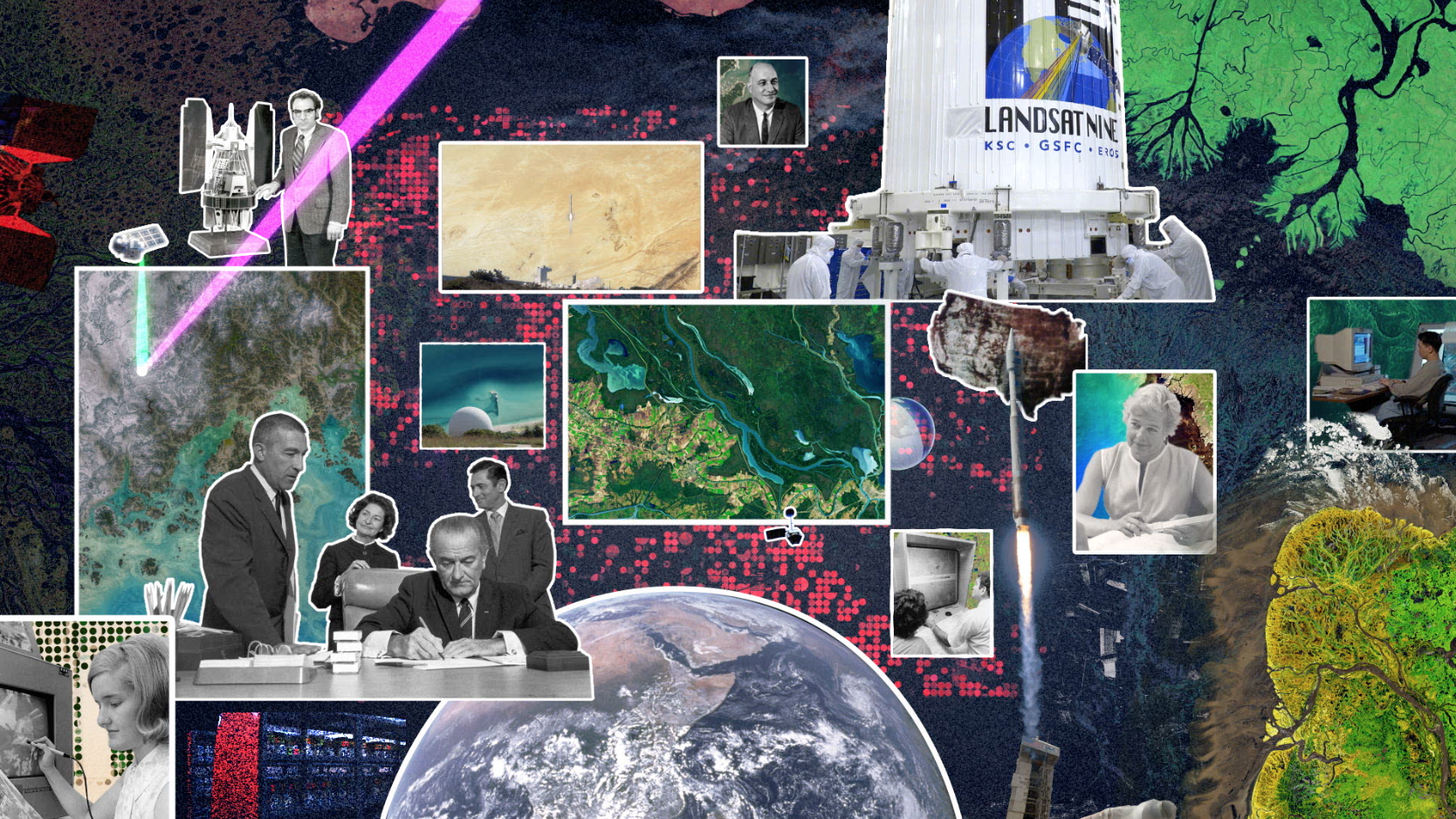Landsat 9 Launch Footage
Video showing the countdown and launch of Landsat 9, on Monday, Sept 27, 2021. The satellite launched at 2:12pm EDT, from Vandenberg Space Force Base in California, riding on and Atlas V rocket.
Landsat 9, a NASA satellite built to monitor the Earth’s land surface, successfully launched at 2:12 p.m. EDT Monday from Vandenberg Space Force Base in California.
A joint mission with the U.S. Geological Survey (USGS), Landsat 9 lifted off on a United Launch Alliance Atlas V rocket from Vandenberg’s Space Launch Complex 3E. Norway’s Svalbard satellite-monitoring ground station acquired signals from the spacecraft about 83 minutes after launch. Landsat 9 is performing as expected as it travels to its final orbital altitude of 438 miles (705 kilometers).
Landsat 9 joins its sister satellite, Landsat 8, in orbit. Working in tandem, the two satellites will collect images spanning the entire planet every eight days.
The instruments aboard Landsat 9 – the Operational Land Imager 2 (OLI-2) and the Thermal Infrared Sensor 2 (TIRS-2) – measure 11 wavelengths of light reflected or radiated off Earth’s surface, in the visible spectrum as well as other wavelengths beyond what our eyes can detect. As the satellite orbits, these instruments will capture scenes across a swath of 115 miles (185 kilometers). Each pixel in these images represents an area about 98 feet (30 meters) across, about the size of a baseball infield. At that high a resolution, resource managers will be able to identify most crop fields in the United States.
The USGS Earth Resources Observation and Science (EROS) Center in Sioux Falls, South Dakota, processes and stores data from the instruments, continuously adding that information to the five decades of data from all of the Landsat satellites.
All Landsat images and the embedded data are free and publicly available, a policy that has resulted in more than 100 million downloads since its inception in 2008.
NASA manages the Landsat 9 mission. Teams from NASA’s Goddard Space Flight Center in Greenbelt, Maryland, also built and tested the TIRS-2 instrument. NASA’s Launch Services Program, based at the agency’s Kennedy Space Center in Florida managed the launch of the mission. EROS will operate the mission and manage the ground system, including maintaining the Landsat archive. Ball Aerospace in Boulder, Colorado, built and tested the OLI-2 instrument. United Launch Alliance is the rocket provider for Landsat 9’s launch. Northrop Grumman in Gilbert, Arizona, built the Landsat 9 spacecraft, integrated it with instruments, and tested it.
To learn more about Landsat 9, visit: https://www.nasa.gov/landsat9
Video showing separation of the Landsat 9 satellite frrom the Centaur upper stage of the Atlas V rocket. Landsat 9 launched into space on September 27, 2021, from Vandenberg Space Force Base and is a joint program managed by NASA and the US Geological Survey.

NASA’s Landsat 9 satellite launches on a United Launch Alliance Atlas V 401 rocket from Space Launch Complex 3 at Vandenberg Space Force Station in California on Sept. 27, 2021. Launch time was 2:12 p.m. EDT (11:12 a.m. PDT).
Credit NASA/Kim Shiflett

NASA’s Landsat 9 satellite launches on a United Launch Alliance Atlas V 401 rocket from Space Launch Complex 3 at Vandenberg Space Force Station in California on Sept. 27, 2021.
Credit: NASA/Kim Shiflett

NASA’s Landsat 9 satellite launches on a United Launch Alliance Atlas V 401 rocket from Space Launch Complex 3 at Vandenberg Space Force Station in California on Sept. 27, 2021.
Credit: NASA/KimShiflett
For More Information
See NASA.gov
Credits
Please give credit for this item to:
NASA's Goddard Space Flight Center
-
Producer
- Matthew Radcliff (KBR Wyle Services, LLC)
-
Technical support
- Aaron E. Lepsch (ADNET Systems, Inc.)
-
Scientist
- Jeffrey Masek (NASA/GSFC)
-
Project manager
- Del Jenstrom (NASA/GSFC)
Release date
This page was originally published on Friday, October 1, 2021.
This page was last updated on Sunday, March 9, 2025 at 11:18 PM EDT.


![Landsat 9, launching September 2021, will collect the highest quality data ever recorded by a Landsat satellite, while still ensuring that these new measurements can be compared to those taken by previous generations of the Earth-observing satellite. Landsat 9 will enable or improve measurements of water quality, glacial ice velocity, crop water usage, and much more.Music: The Waiting Room by Sam Dodson [PRS], Afterglow by Christopher Timothy White [PRS], both published by Atmosphere Music Ltd [PRS]; and Inner Strength by Brava/Dsilence/Input/Output [SGAE], published by El Murmullo Sarao [SGAE] and Universal Sarao [SGAE]. Available from Universal Production Music. Complete transcript available.Watch this video on the NASA Goddard YouTube channel.](/vis/a010000/a013800/a013889/13889_Landsat9_at_Work_print.png)